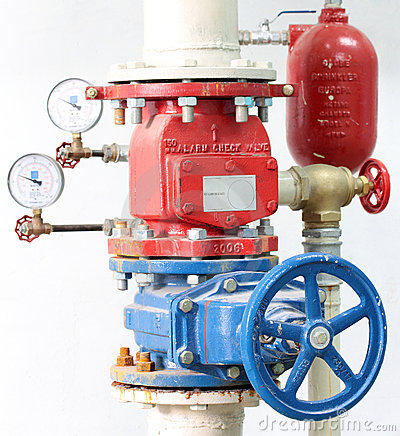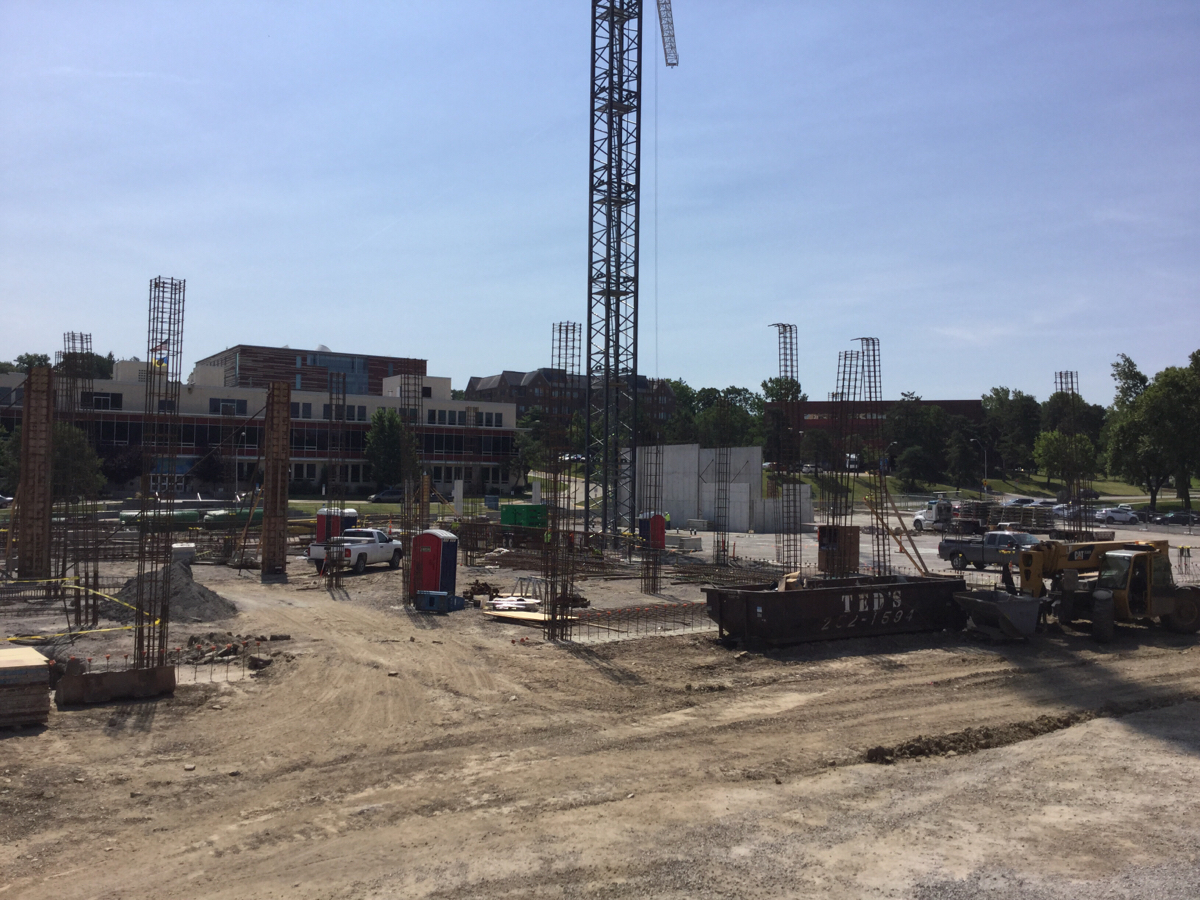Information
-
Audit Title
-
Document No.
-
Client / Site
-
Conducted on
-
Prepared by
-
Location
-
Personnel
-
Owner's Name and Phone Number:
-
Owner's Address:
-
Property Being Inspected:
-
Property Address:
-
Date of Inspection:
-
This inspection is:
-
All responses refer to the current inspection performed on this date.
-
Notes: 1) All questions are to be answered Yes, No, or Not Applicable. All NO answers are to be explained in Part III of this form. 2) Inspection, Testing and Maintenance are to be performed with water supplies (including fire pumps) in service, unless the impairment procedures of Chapter 11 of NFPA 25 are followed.
Part I - Owner's Section
-
A. Is the building occupied?
-
B. Has the occupancy classification and hazard or contents remained the same since the last inspection?
-
C. Are all fire protection systems in service?
-
D. Has the system remained in service without modification since the last inspection?
-
E. Was the system free of actuation of devices or alarms since the last inspection?
-
Owner or Representative Printed Name:
-
Signature and Date:
Part II - Inspector's Section
A. Inspections
1. Daily and Weekly Items
-
A. Control valves supervised with seals in correct (open or closed) position?
-
B. Backflow preventers:
-
1. Valves in correct (open or closed) position?
-
2. Sealed, locked or supervised and accessible?
-
3. Relief port on RPZ device not discharging?
2. Monthly Inspection Items (in addition to the above items):
-
A. Control valves with locks or electrical supervision in correct (open or closed) position?
-
B. Sprinkler wrench with spare sprinklers?
-
C. Gauges on wet-pipe system in good condition and showing normal water perssure?
-
D. Alarm Valves: Gauges show normal supply water pressure, free from physical damage, valves in correct (open or closed) position and no leakage from retarding chamber or drains?
3. Quarterly Inspection Items (in addition to the above items).
-
A. Pressure Reducing Valves:
-
1. In open position and not leaking?
-
2. Maintaining downstream pressure per design criteria?
-
3. In good condition with hand wheels not broken?
-
B. Hydraulic nameplate, if provided, securely attached to riser and legible?
-
C. Fire Department Connections:
-
1. Visible and accessible?
-
2. Couplings and swivels not damaged and rotate smoothly?
-
3. Plugs or caps in place and undamaged?
-
4. Gaskets in place and in good condition?
-
5. Identification sign(s) in place?
-
6. Check valves not leaking?
-
7. Automatic drain valve in place and operating properly?
-
(If plugs or caps are not in place, inspect interior for obstructions).
-
D. Alarm devices free from physical damage?
4. Annual Inspection Items (in addition to above items):
-
A. Proper number and type of spare sprinklers?
-
B. Visible sprinklers:
-
1. Free of corrosion and physical damage?
-
2. Free of obstruction to spray patter?
-
3. Free of foreign materials including paint?
-
4. Liquid in all glass bulb sprinklers?
-
C. Visible Pipe:
-
1. In good condition/ no external corrosion?
-
2. Free of mechanical damage and not leaking?
-
3. Properly aligned and no exernal loads?
-
D. Visible pipe hangers and seismic braces not damaged or loose?
-
E. Hose, hose couplings and nozzles on sprinkler system passed inspection in accordance with NFPA 1962?
-
F. Adequate heat in areas with wet piping?
-
G. Has an internal inspection of the pipe been performed by removing the flushing connection and one sprinkler near the end of a branch line within the last 5 years?
-
(If the answer was "NO," conduct an internal inspection).
5. Fifth Year Inspection Items (in addition to the above items):
-
A. Alarm valves and their associated strainers, filters and restriction orifices passed internal inspection?
-
B. Check vavles internally inspected and all parts operate properly, move freely and are in good condition?
B. Testing
-
The following tests are to be performed at the noted intervals. Report any failures on Part III of this form.
1. Quarterly Test:
-
A. Mechanical waterflow alarm devices passed tests by opening the inspector's test connection or bypass connection with alarms actuating and flow observed?
-
B. Post indicating valves opened until spring or torsion is felt in teh rod, then closed back one-quarter turn?
-
C. Main drain test for system downstream of backflow or pressure reducing valve:
-
1. Record static pressure and residual pressure. (PSI)
-
2. Was flow observed?
-
3. Are results comparable to previous tests?
2. Semiannual Test (in addition to previous items):
-
A. Valve supervisory switches indicate movement?
-
B. Electrical waterflow alarm devices passed tests by opening the inspector's test connection or bypass connection with alarms actuating and flow observed?
3. Annual Tests (in addition to previous items):
-
A. Main drain test:
-
1. Record Static Pressure and Residual Pressure (PSI).
-
2. Was flow observed?
-
3. Are results comparable to previous test?
-
B. Are all sprinklers in service dated 1920 or later?
-
C. Fast response sprinklers 20 or more years old replaced or successfully sample tested within the last 10 years?
-
D. Standard response sprinklers 50 or more years old replaced or successfully sample tested within last 10 years?
-
E. Standard response sprinklers 75 or more years old replaced or successfully sample tested within the last 5 years?
-
F. Dry-type sprinklers replaced or successfully sample tested within last 10 years?
-
G. Specific gravity of antifreeze correct?
-
H. All control valves operated through full range and returned to normal position?
-
I. Backflow devices passed backflow test?
-
J. Backflow devices passed full flow test?
-
K. Pressure reducing valves passed partial flow test?
4. Test to be done every third year:
-
A. Hose (more than 5 years old) connected to the system has been service tested in accordance with NFPA 1962. Water discharged and water flow alarms operated?
5. Test to be done every fifth year.
-
A. Extra high, very extra high and ultra high temperature sprinklers tested?
-
B. Gauges checked against calibrated gauge or replaced?
-
C. Pressure reducing valves passed full flow test?
C. Maintenance
1. Regular Maintenance Items:
-
A. If sprinklers have been replaced. Were they properly replaced?
-
B. Used hose was cleaned, drained and dried before being placed back in service? hose exposed to hazardous materials was disposed of or decontaminated in an approved manner?
-
C. Systems normally filled with fresh water were drained and refilled twice if raw water got into the system?
-
D. If any of the following were discovered, was an obstruction investigation conducted and the system flushed?
-
Explain reason(s) and obstruction investigation findings in Part III.
-
1. Defective intake screen for pumps taking suction from open sources.
-
2. Obstructive material discharged during waterlfow tests.
-
3. Foreign materials found in dry-pipe valves, check valves or pumps.
-
4. Foreign material in water during drain test or plugging of inspector's test connection.
-
5. Plugging of pipe or sprinklers found during activation or alteration.
-
6. Failure to flush yard piping or surrounding public mains following new installation or repairs.
-
7. Record of broken mains in the vicinity.
-
8. Abnormally frequents false-tripping of dry-pipe valves.
-
9. System is returned to service after an extended period out of service (greater than one year).
-
10. There is reason to believe the system contains sodium silicate or its derivatives or highly corrosive fluxes in copper pipe systems.
-
E. If conditions were found that required flushing, was flushing of system conducted?
2. Annual maintenance items:
-
A. Operating system of all OS&Y valves lubricated, completely closed, and reopened?
-
B. Sprinklers and spray nozzles protecting commercial cooking equipment and ventilation systems replaced except for buld-type which show no signs of grease buildup?
Part III- Comments (Any "No" answers, test failures or other problems found with the sprinkler system must be explained here. Also, note here any products noticed on the system that have been the subject of a recall or a replacement program.)
-
Notes:
Part IV - Inspector's Information
-
Inspector (Print Name):
-
Company:
-
Company Address:
-
Signature of Inspector and Date:
-
LIcense or certification number (if applicable):
-
I state that the information on this form is correct at the time and place of inspection, and that all equipment tested at this time was left in operational condition upon completion of this inspection except as noted in Part III above.
Backflow Preventer
-
Tested for NFPA 25 Requirements ONLY. Certification DOES NOT fall within the scope of this inspection.
Fire Alarm
-
Inspection & Certification is to be performed by an Alarm Contractor.
Fire Extinguisher(s)
-
Inspection & Certification is to be performed by Others.
NFPA 25 2008:4.1.5 "changes in Occupancy, Use, Process, or Materials"
-
The property owner or occupant shall not make changes in the occupancey, the use or the material used or stored in the building without evaluation of the fire protection systems for their capability to protect the new occupancy, use or materials.
NFPA 25 2008:4.1.6 "Addressing Changes in Hazard"
-
Where changes in the occupancy, hazard, water supply, storage commodity, storage arrangement, building modification, or other condition that affects the installation criteria of the system are identified, the property owner or occupant shall promptly take steps such as contacting a qualified contractor, consultant or engineer, and the authority having jurisdiction, to evaluate the adequacy of the installed system in order to protect the building or hazard in question.












